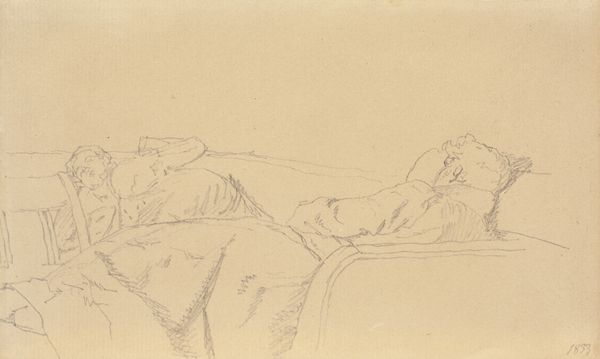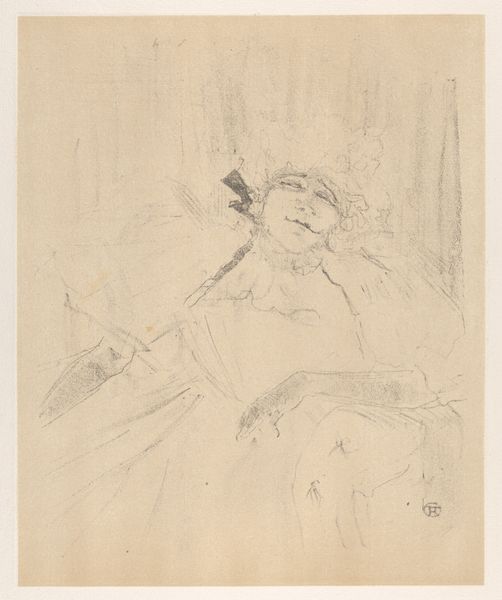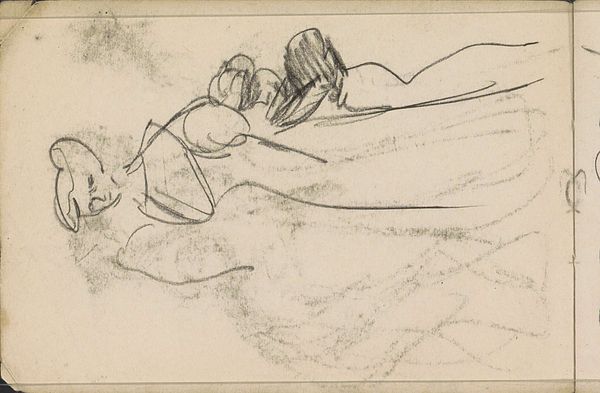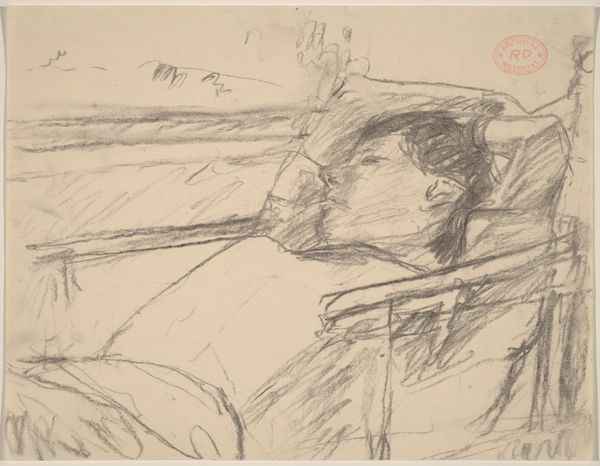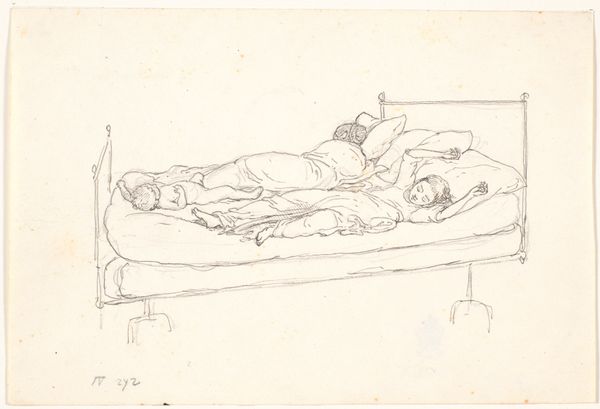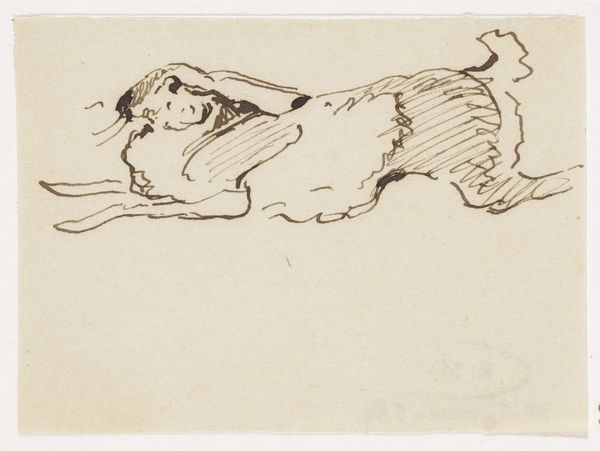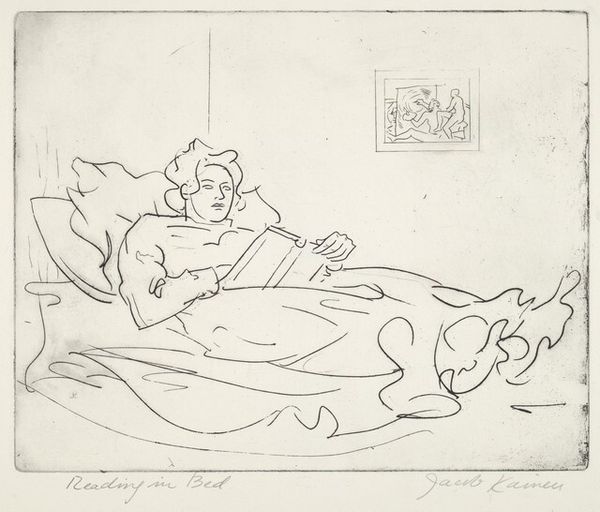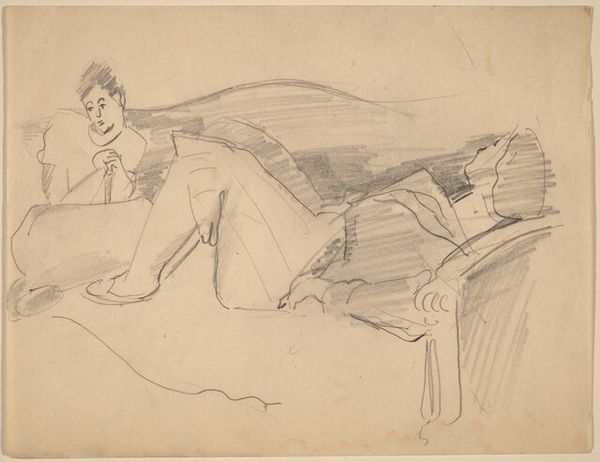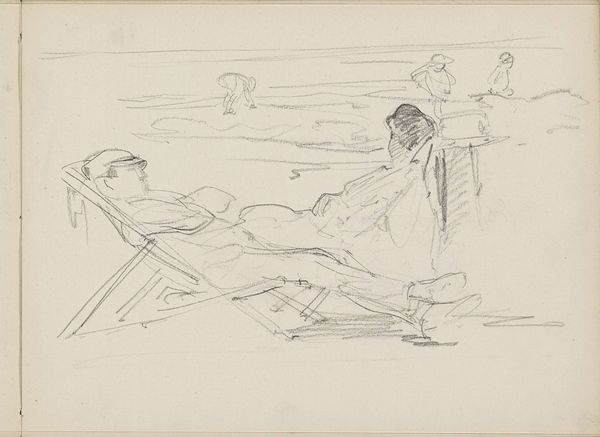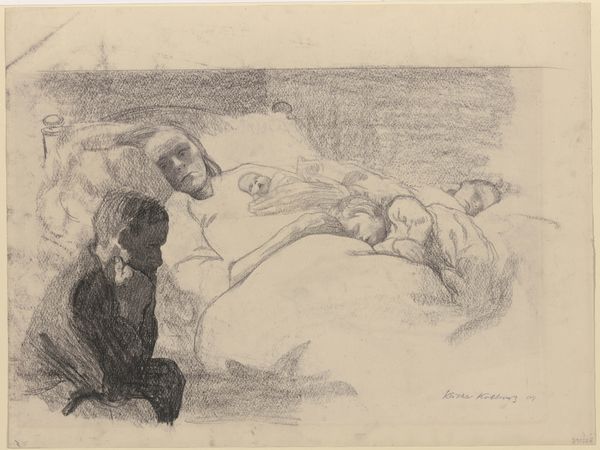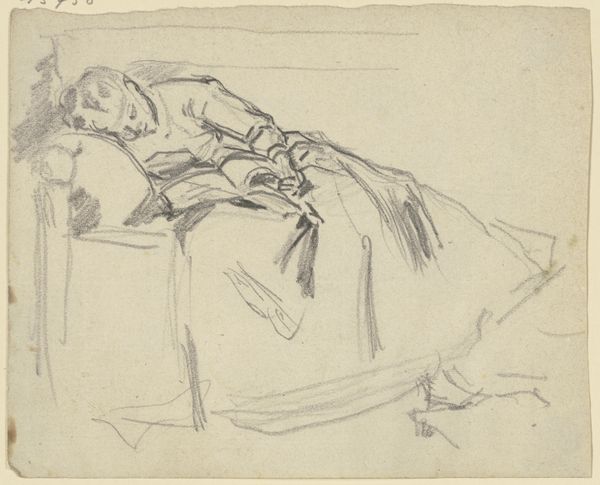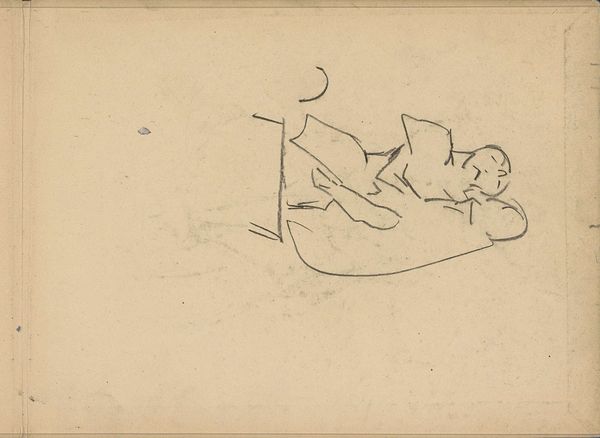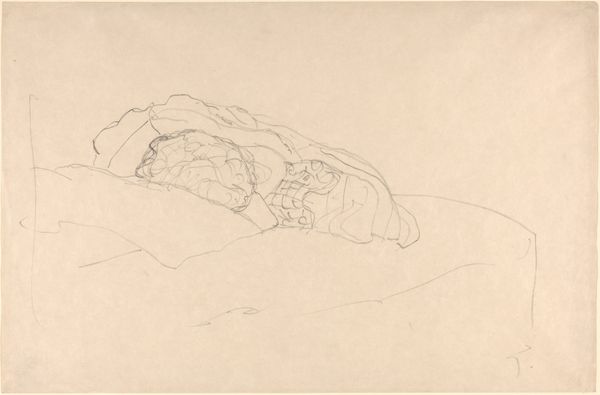
drawing, print, etching
portrait
drawing
pen sketch
etching
genre-painting
realism
Dimensions: height 106 mm, width 184 mm
Copyright: Rijks Museum: Open Domain
Curator: Looking at "Mappie Resting in her Bed" by Willem Adrianus Grondhout, likely created around 1917, one notes the immediacy afforded by its etching and drypoint media, rendering a candid domestic scene. What springs to mind for you, immediately? Editor: Melancholy. Despite the simplicity of the line, there’s an unmistakable air of solitude, even vulnerability, in her repose. That bottle on the bedside table only amplifies that feeling. Curator: Indeed. Genre scenes like these became increasingly important for reflecting contemporary life. Grondhout captured an intimate moment—a woman in repose, perhaps ill, in her private sphere. The print medium itself democratized such imagery. Editor: And there's a long history of the bed as a symbol. It's not merely a place for rest, but also for birth, illness, death – pivotal moments. The angle even has the feel of some of the many Annunciation scenes in religious art; only in this case the focus is on a much more commonplace reality. Curator: Interesting! Shifting from spiritual revelation to secular domesticity. Also the etching's accessible nature underscores a new viewership for art. Consider, it circulates among middle-class homes, inviting reflections on universal human experiences within modern society. Editor: The lines that make up her body, the blanket even, suggest weight, fatigue. What’s especially poignant is her gaze. Is it fixed on something beyond our view, or simply lost in thought? It’s an ambiguous visual cue, but filled with psychological insight. Curator: You know, what resonates for me is the power this image holds reflecting upon gendered roles during a transitional time. Mappie resting might be Grondhout reflecting the constraints and societal expectations women encountered amidst emerging societal shifts during the early twentieth century. Editor: It also prompts us to reflect on the shared experience of quiet moments of illness or isolation – an etching of profound stillness, capturing not just an individual, but a sentiment that speaks across generations.
Comments
No comments
Be the first to comment and join the conversation on the ultimate creative platform.
